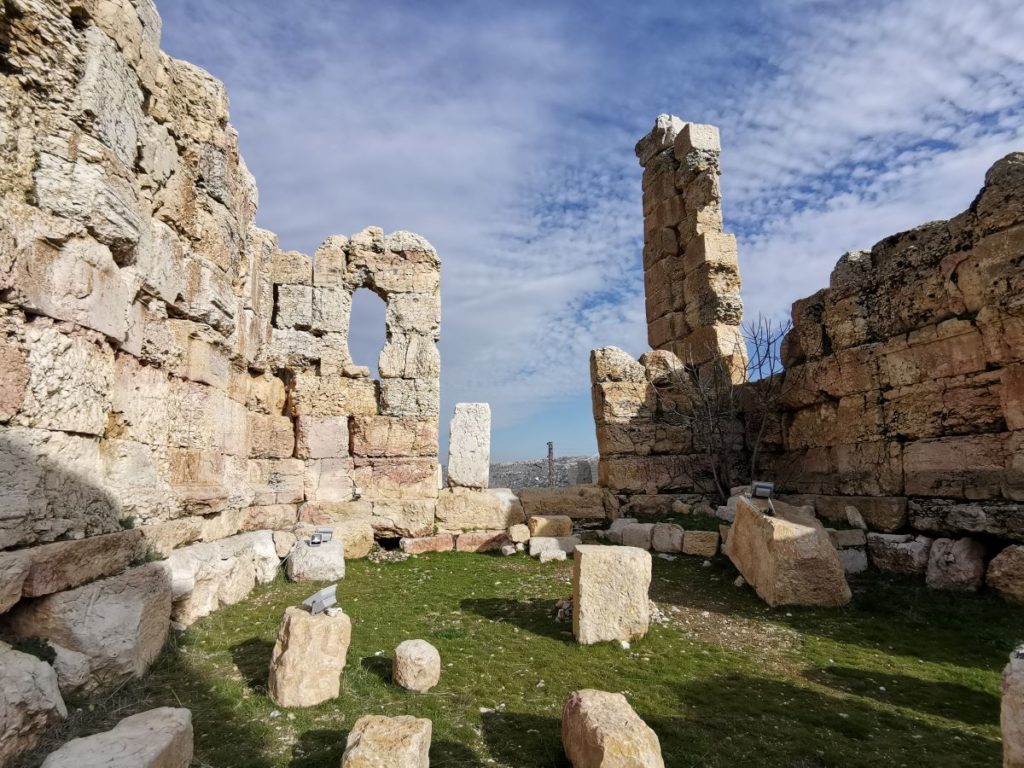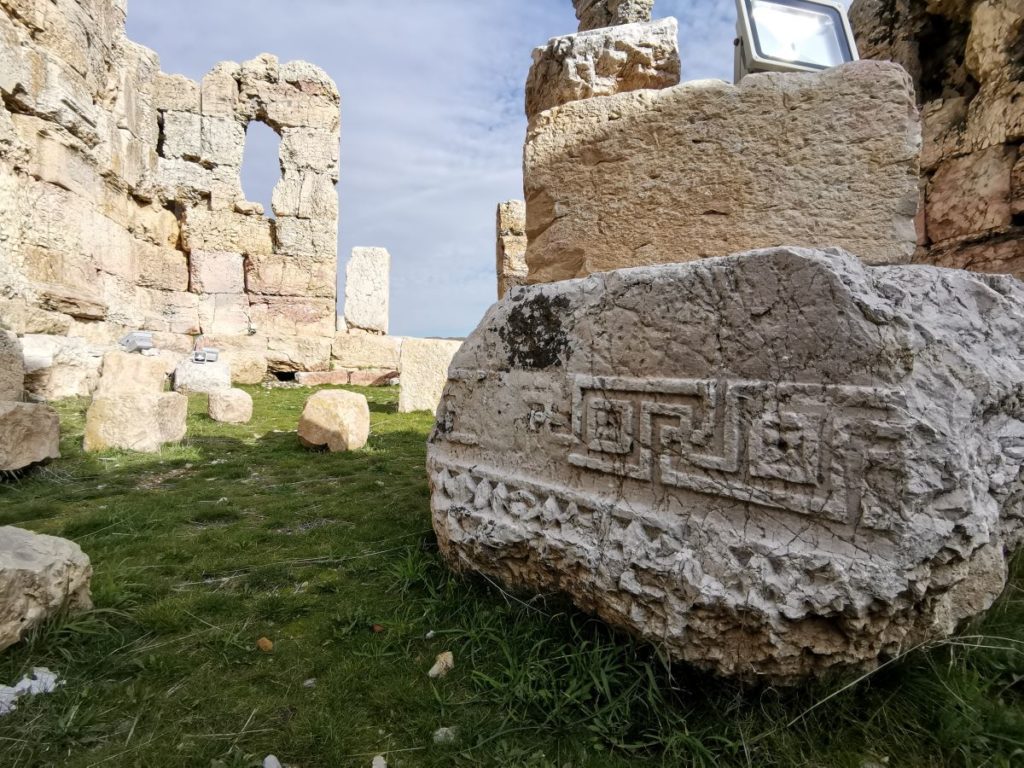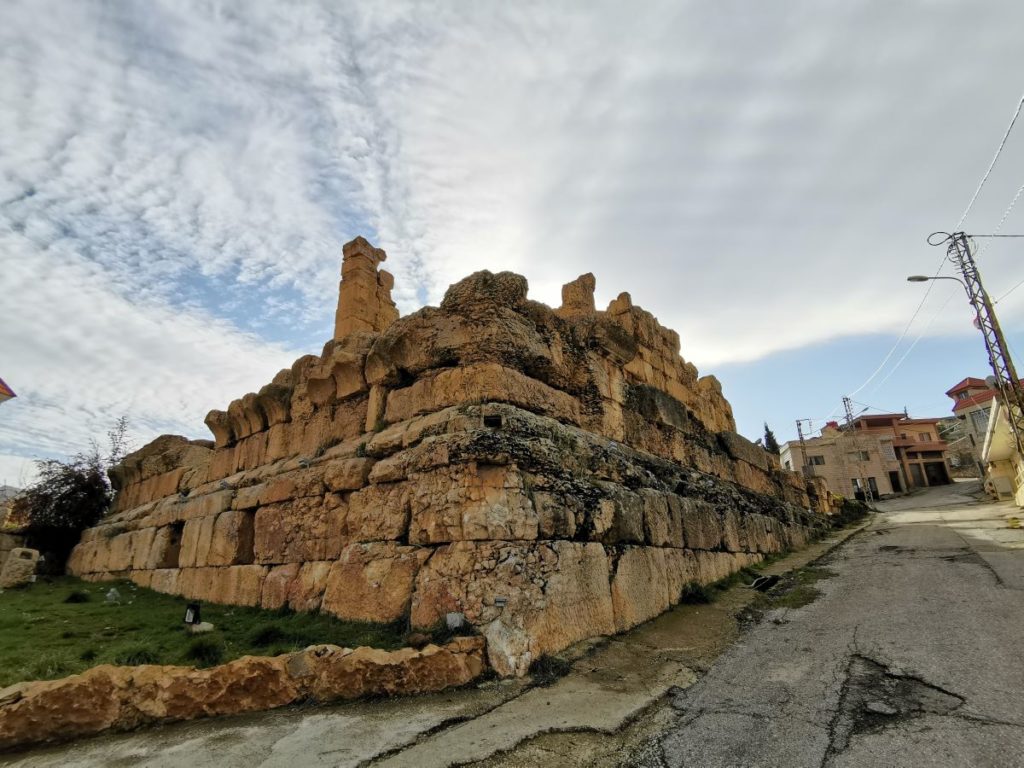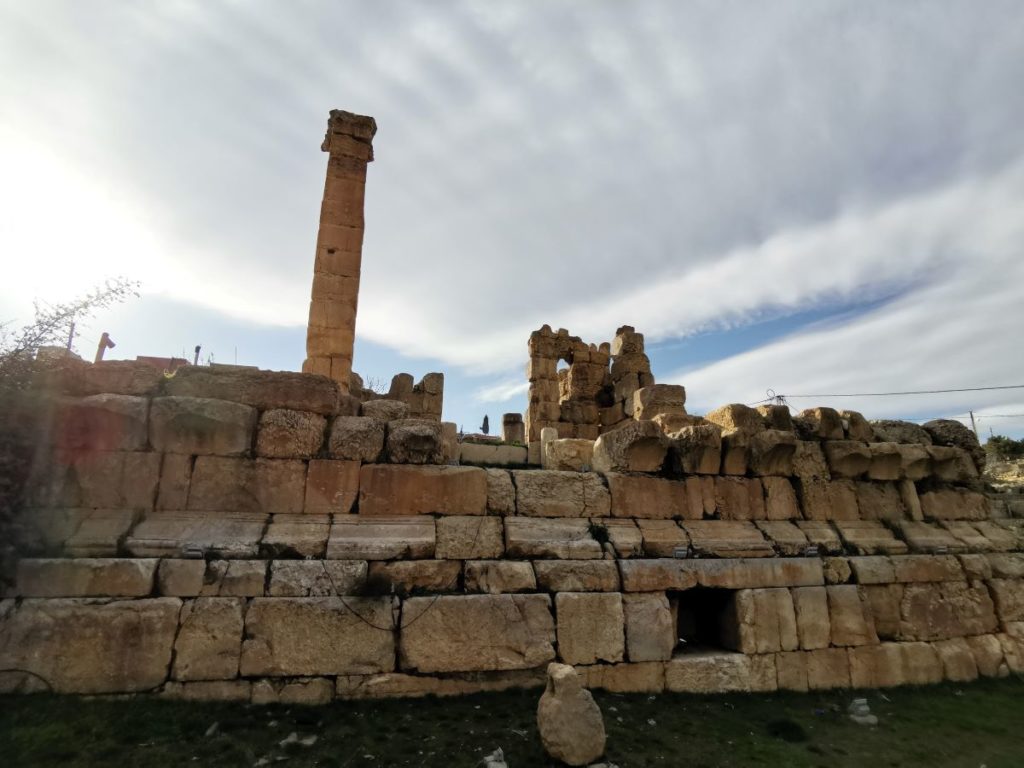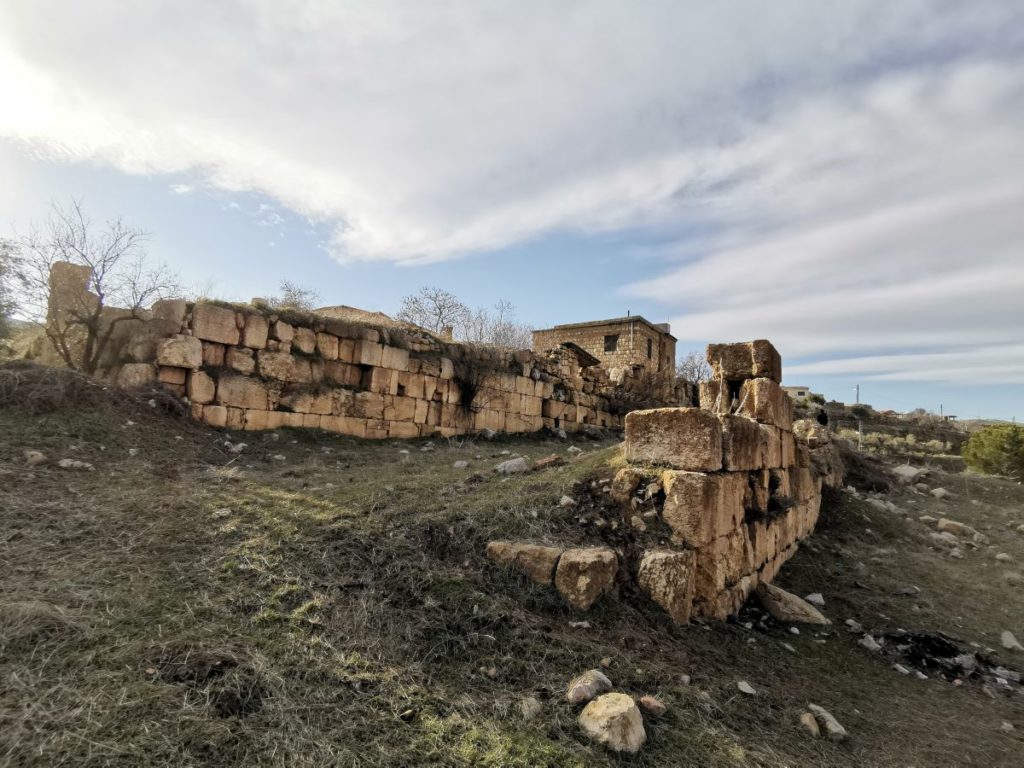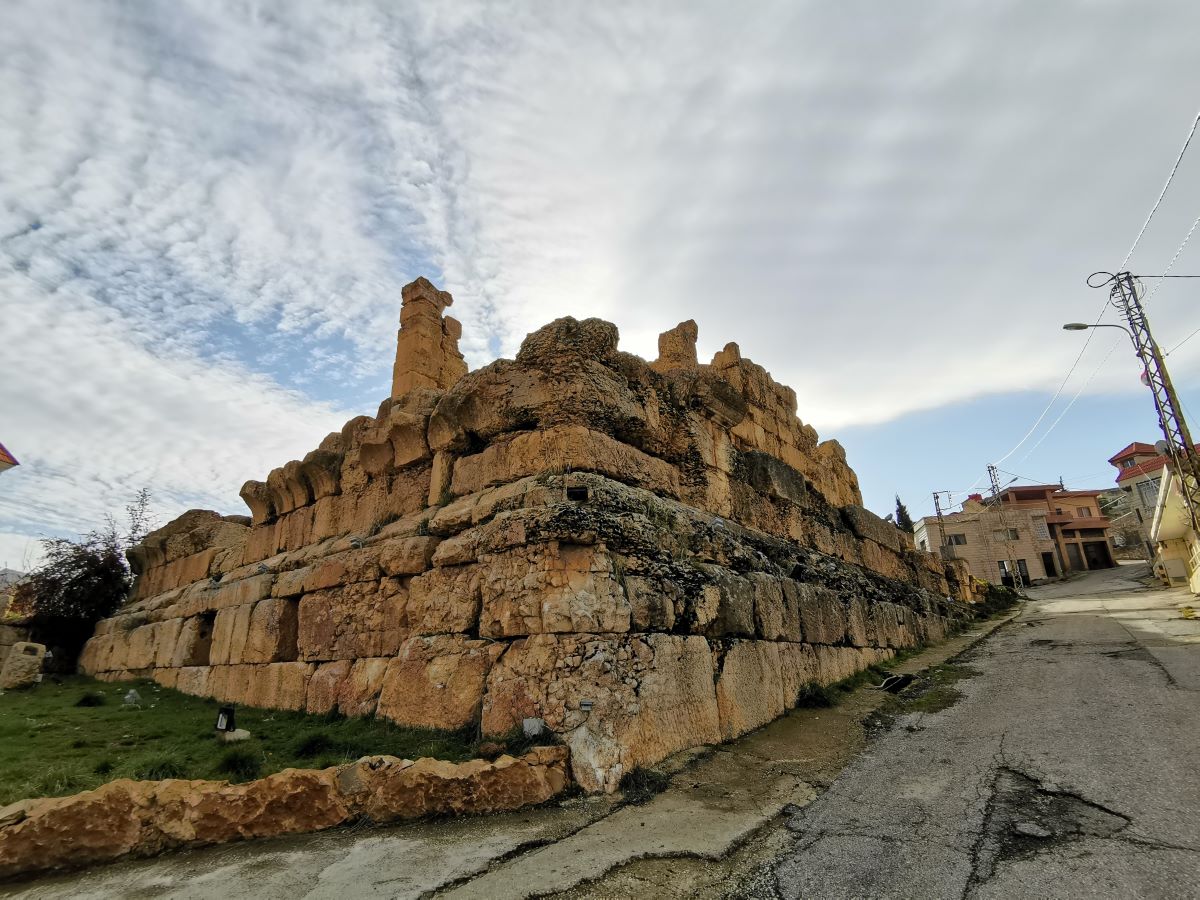The village of Deir El Aachaiyer houses one of the biggest Roman temples in Lebanon.
Some archeologists presume that the foundations of the temple are the biggest after the ones of the Bacchus temple in Baalbek.
Dedication
According to an inscription found on site, the temple is dedicated to the gods of “Kiboreia” and that its worship is placed under the responsibility of a high priest in 132 AD.
The inscription states the following: “The year 242, under Beeliabos, also called Diodotos, son of Abedanes, high priest of the gods of Kiboreia, the seat was carried out” (242 equals 132 during the Sidonian era).
“Kiboreia” was presumably the name of Deir El Aachaiyer, or a nearby area during antiquity. The cult and era of the gods of Kiboreia is still unknow to-date.
Structure
Open to the east, the temple rests on a solid foundation which offsets the slope of the land.
Built following the ionic order, the temple preserved its pronaos (space of the temple’s entrance), its cella (section where the deity is venerated) and the adyton (sacred area inside the cella). The ornaments and niches of the pronaos and the cella are degraded.
Excavations concluded that the initial architecture of the temple was remodeled, and its construction was never completed.
Nothing remains of the monumental staircase, and many sections of the temple were dismantled and reused to construct modern buildings.
Note
Some modern houses were built on top of the temple’s terraces and foundations. In addition, the area seemed to have housed a pottery workshop – one can find thousands of pottery shreds everywhere around the site.
**Visitors who would like to go to Deir El-Aacheier should take a permit from the ministry of defense since the area is a military zone**
Karim Sokhn
Tour Operator & Tour Guide
References:
La Vie Religieuse Au Liban Sous L’Empire Romain – Julien Aliquo
Inscriptions Greques Et Latines De La Syrie, Tome 11 – Mont Hermon (Liban et Syrie) – Julien Aliquo
